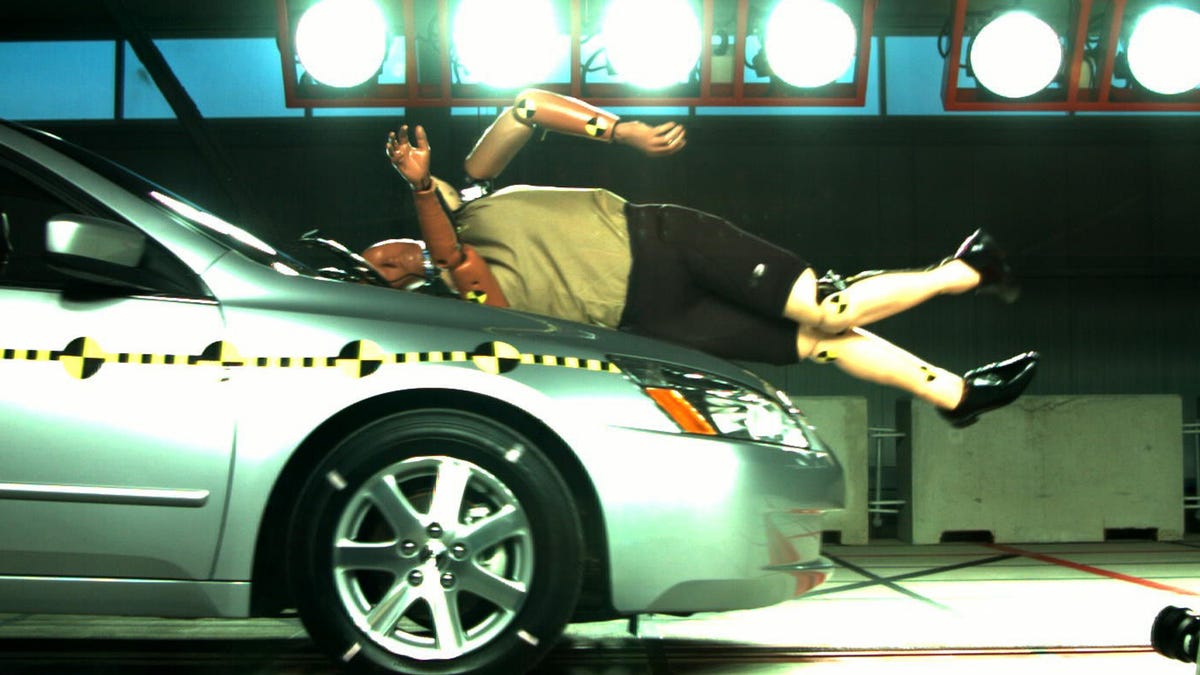IIHS: Automatic emergency braking has trouble in darkness
A new study shows that, just like drivers, cars don't see so well at night.
Automatic emergency braking is a life-saving feature that effectively prevents crashes, even grisly vehicle-to-pedestrian wrecks. But according to a study released on Thursday by the Insurance Institute for Highway Safety, this technology's effectiveness is dramatically reduced in low-light situations. It turns out, just like drivers , cars have trouble seeing at night.
The IIHS found that automatic emergency braking with pedestrian-detection technology reduced crashes of all severities by 27% in all lighting conditions. Wrecks that cause injuries were reduced by an impressive 30%. But there's a bit of bad news in this. The watchdog organization found that at night, on roads that aren't lit, there was no difference in the crash risk for vehicles that feature automatic emergency braking and pedestrian detection compared to models not fitted with these features, a troubling discovery.
Automatic emergency braking absolutely saves lives, but there's a caveat. "Unfortunately, it also shows these systems are much less effective in the dark, where three-quarters of fatal pedestrian crashes happen," says Jessica Cicchino, the author of this study and IIHS vice president of research. Short of installing streetlights on every mile of thoroughfare across the country, automakers will have to improve how these systems work in the dark.
Automatic emergency braking with pedestrian detection absolutely saves lives, it's just often dramatically less effective in darkness.
To address this issue, the IIHS is developing a new nighttime pedestrian test. Later this year, the organization will publish the first ratings for vehicles evaluated in this category. Ahead of these official scores, the group tested eight small SUVs to see how well they were able to avoid crashing with pedestrians at night. This group included the 2019 Subaru Forester, 2019 Volvo XC40, 2020 Honda CR-V, 2020 Hyundai Venue, 2021 Chevrolet Trailblazer, 2021 Ford Bronco Sport, 2021 Toyota C-HR and 2022 Volkswagen Taos. This wide range of makes and models covers a variety of different sensing technologies, from single- and dual-camera setups to radar-only affairs.
The performance of these vehicles' pedestrian detection and automatic emergency braking tech declined in the dark and when the low-beam headlights were used compared to high beams. One outlier is the Taos, which only has radar, a sensor that doesn't rely on visible light. Its performance did not decline in the dark, though it was also the worst in daylight driving, so pick your poison. The two best vehicles in nighttime testing proved to be the C-HR and Bronco Sport, both of which have cameras and radar sensors.
Acing the organization's upcoming test may sound like yet another hoop for automakers to jump through, but there's good reason to make sure automatic emergency braking works in all lighting conditions. According to the National Highway Traffic Safety Administration, 6,205 pedestrians were killed in crashes in 2019, an increase of more than 50% since 2009. Putting things in perspective, that total makes up about a third of all traffic fatalities. Beyond that, according to the IIHS "around 76,000 more pedestrians sustained nonfatal injuries in crashes with motor vehicles," so clearly there a lot of work to be done here.


